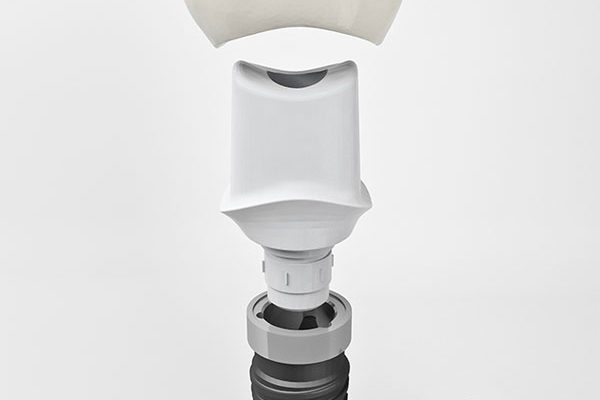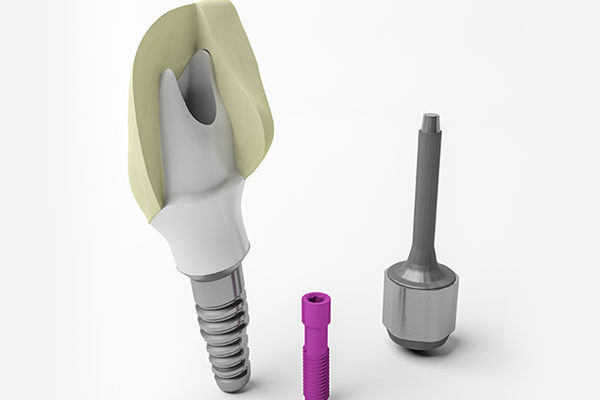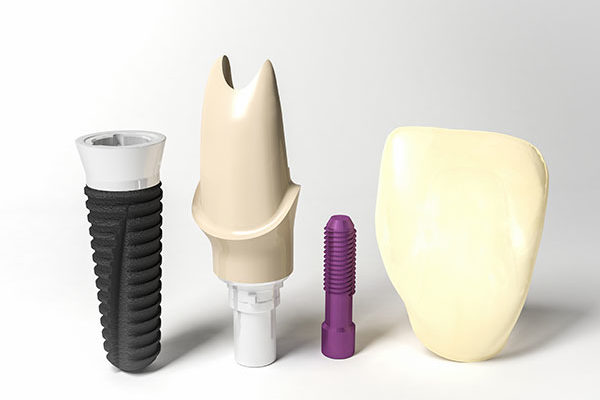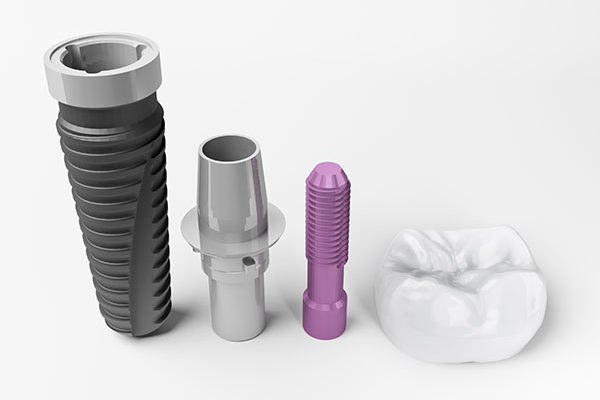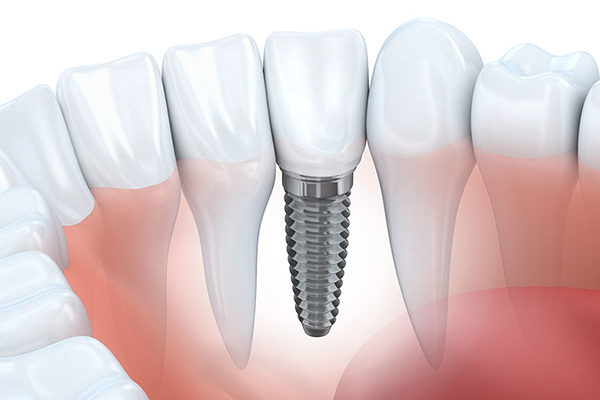


- Replaces one or more missing teeth
- Maintains your bone
- Restores your smile
- Allows you to chew properly
- Takes years off your appearance
- Doesn’t come loose like dentures
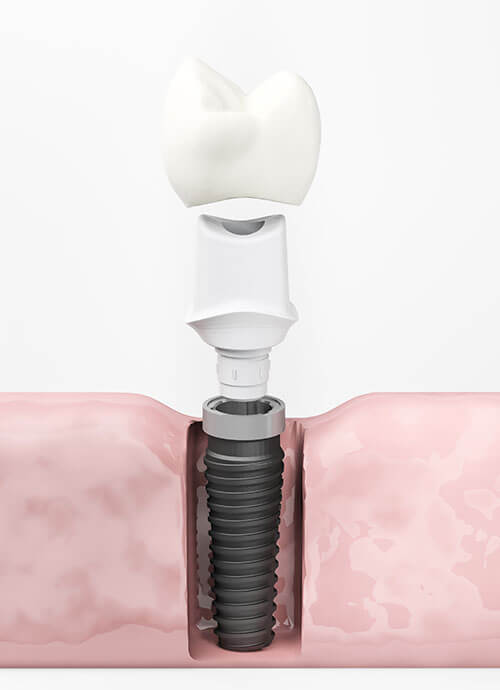
How Implants Compare to Traditional Dentures
Dentures have been a solution for missing teeth for centuries, but they have a few notable flaws. When we use our own teeth to chew, it stimulates the jaw bone and keeps it strong. Dentures aren’t very effective at providing this stimulation, resulting in oral health problems like bone loss in the jaws. This, in turn, can lead to the dentures not fitting very well, so they can slip and fall out easily and leave the gums feeling sore.
Dental implants, on the other hand, are artificial teeth that are placed into the jawbone and function the same way as the roots of teeth. Implants greatly reduce the risk of bone loss and they won’t slip and slide while you’re trying to chew your food or have an engaging conversation. Taking care of implants is the same as taking care of natural teeth. True, the price tag can be higher with implants than dentures, but that’s pretty much the only advantage removable dentures have as replacement teeth. Implants can replace individual teeth or they can be used as anchors to support full or partial dentures.
Benefits of Dental Implants
Dental implants are the gold standard for replacing missing teeth in modern dentistry. Anyone missing teeth understands that they sacrifice confidence and the ability to smile and laugh without covering their mouths in shame. The most obvious of benefits is the ability for greater enjoyment of life. But the benefits go far beyond this:
- Improved appearance and overall self-esteem: Dental implants look and feel like your own teeth because they permanently fuse with the bone. They give you back your smile and help you feel confident in yourself.
- Improved speech: With dentures, the teeth can slip and slide in the mouth, causing slurring or mumbling. With dental implants, you speak without the worry that teeth might slip.
- Improved comfort and convenience: Because they become part of you, there is no more embarrassing inconvenience of removing dentures or the need for messy adhesives to keep them in place.
- Easier eating: Sliding dentures can make chewing especially difficult. Dental implants function like your own teeth, allowing you to eat your favorite foods without pain. Teeth are supported by stable and robust implant posts that have fused with your jawbone.
- Improved oral health: Dental implants don’t require attachment to other teeth, as a tooth-supported bridge does. Because nearby teeth don’t support the implant, your original teeth are left intact, improving long-term oral health.
- Durability: Implants are long-lasting and durable. With proper care, they will last many years. Some implants can last a lifetime.
- Stopping bone loss: A natural tooth root provides continual stimulation to the bone surrounding it through force whenever you bite down or chew with that tooth. If the tooth is absent, this stimulation is lost, and the bone recedes. By replacing your tooth root with a dental implant post, stimulation is restored to your jawbone, halting further bone loss.
- Healthy remaining natural teeth: Restoring missing teeth with dental implants protects your remaining teeth by preventing them from moving out of position and maintaining your natural bite.
Caring for Dental Implants
To ensure that your implant lasts as long as it should, you should keep up with good daily oral hygiene habits. An implant can’t get a cavity like a normal tooth, but because it lacks the periodontal ligament between the gum and implant, the surrounding tissue can be vulnerable to infection. We encourage our dental implant patients to be diligent with brushing and flossing so that they can avoid problems like peri-implantitis.
The Anatomy of a Dental Implant
There are three parts that make up a dental implant.
- The implant: a titanium screw, which is surgically placed into the patient’s jaw bone where the original tooth used to be
- The abutment: a small piece that ensures a snug fit
- Crown: the top part of the tooth, which is attached to the implant and matches your natural teeth


